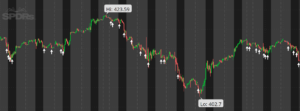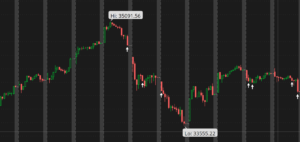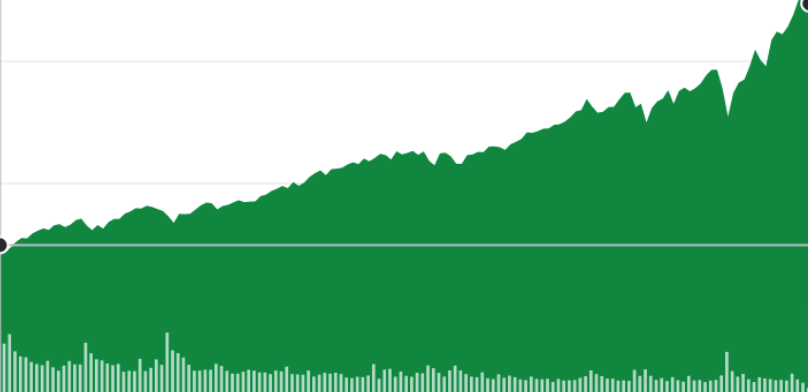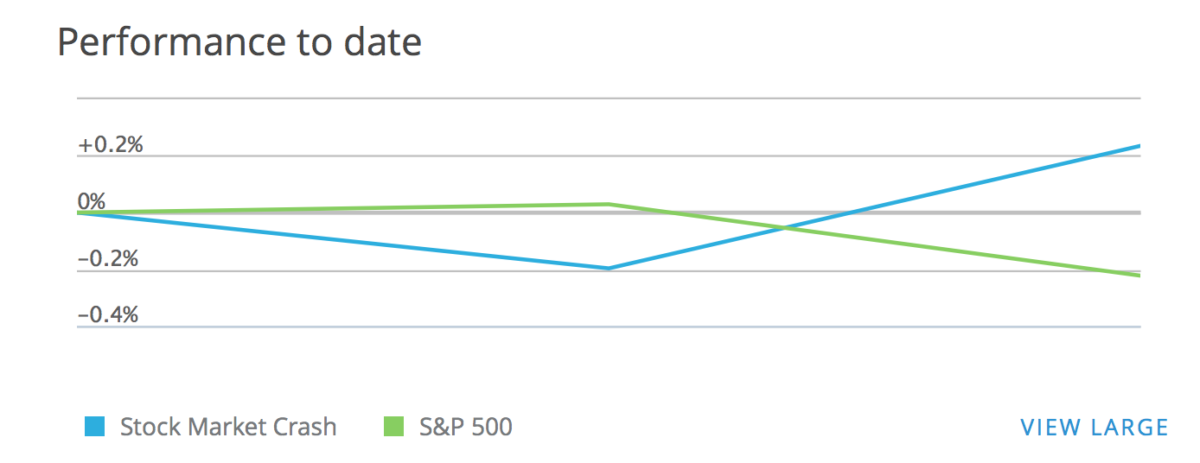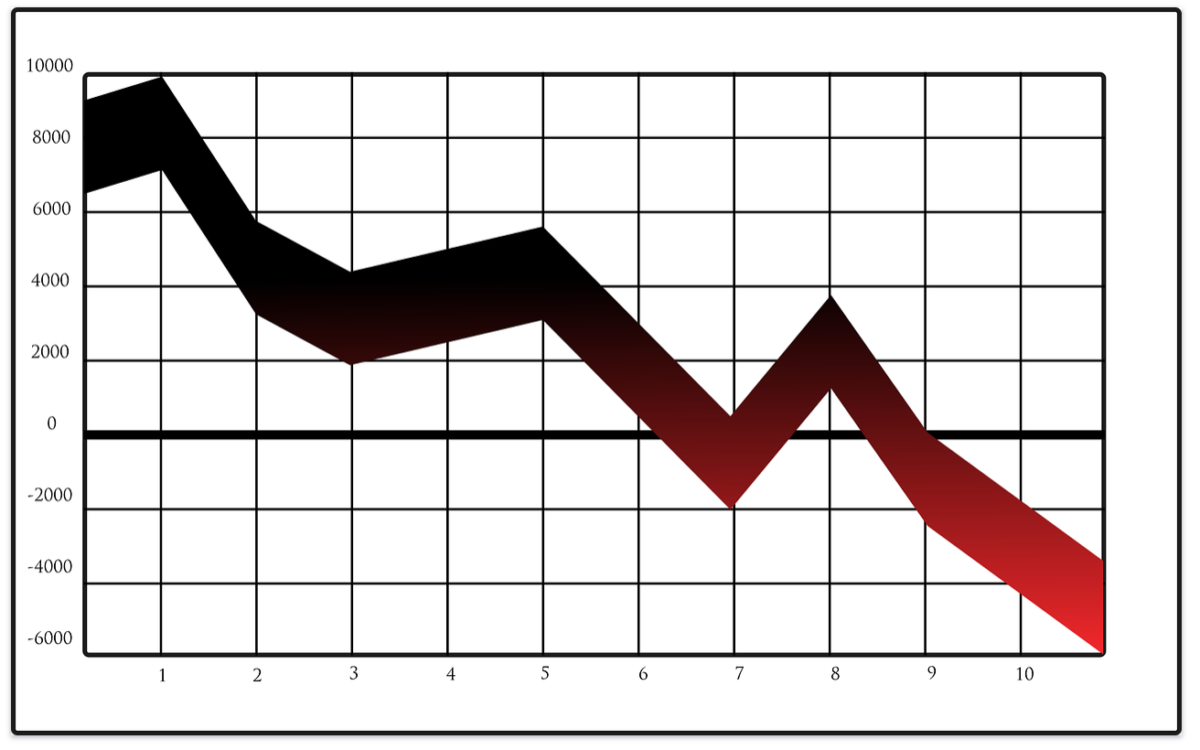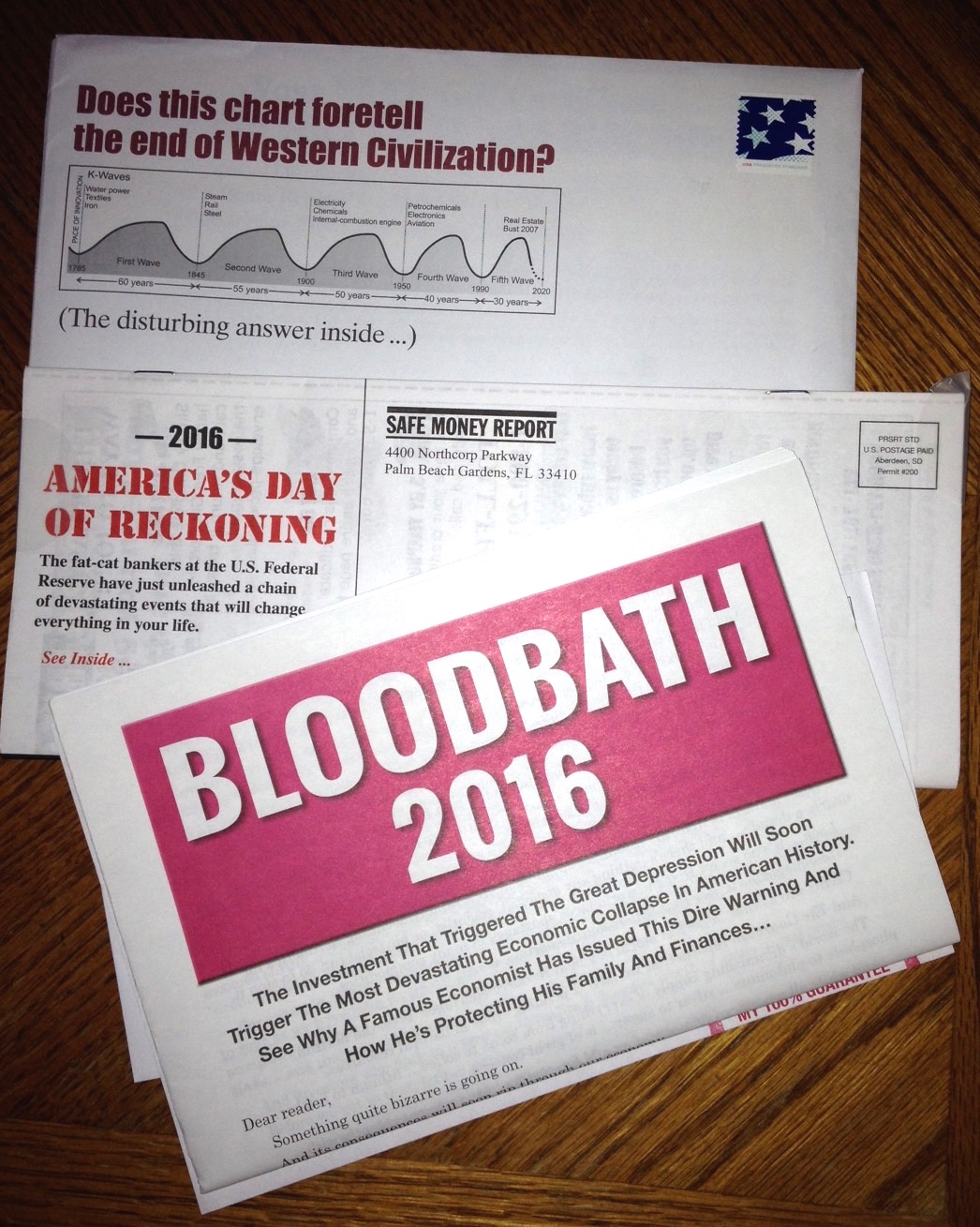by Fred Fuld III
There are many ways to make money from a bearish stock market, some speculative, and some not very risky. And this is a good thing, because smaller investors need a way to protect themselves, and even make money on the downside. This has been a strong stock market for the last ten years, and many investors think that we may be at or near the top. So here are several options to choose from.
1. Shorting Stocks
OK, let’s get this one over with first because it is one of the most speculative ways of making money in a bear market. In simple terms, you make money when the stock goes down and you lose money when the stock goes up. What technically happens is that you borrow the shares and immediately sell them (this all is done electronically through your brokerage firm) and since you owe those shares, you eventually have to buy them back at some price, hopefully a lower price. The difference between your sale price and eventual purchase price is your profit (or loss, if you buy back at a higher price).
Can you make a lot of money shorting stocks in a bear market? Yes. Is it speculative? Very. Can you lose a lot? Most definitely. This is why it is so risky. When you short a stock, the lowest point it can drop to is zero. Whereas, if the stock goes up, the amount it can rise is unlimited. Let’s say you short 100 shares of a stock at $20 a share. If you put up funds equal to 100% of the value of the shorted amount, and the stock drops to zero, you’ve made a 100% return. However, suppose the stock goes from 20 to 100, you end up losing 400% of your money with lots of margin calls along the way.
Have I shorted stocks? Yes. Have I made money from shorting? Yes, especially during the 2008 stock market crash. Have I lost a big chunk of my profits by closing out my short positions and going long, trying to predict the bottom? In the interest of full disclosure, yes. I made the second worse decision I could have made when shorting, and that is predicting the bottom of the market too soon. The worst decision would have been to hold on to my short positions after the market bottoms and starts to make a quick rise. Often when the market bottoms at the end of a bear market, the rise is very sharp and fast, and can totally wipe out short position profits very quickly and then some.
But even on a short term basis, an investor can lose money very fast. A friend of mine, who is a trader, told me that he does a lot of shorting but always hedges his shorts by buying calls to protect himself in case the stock moves up. When I told him that I never hedge my individual stock shorts, he said “You’re kidding! I never give advice to anyone, but I’m going to give you some advice. Never short a stock without hedging. You might be watching the market, then get up and go to the bathroom, come back a half hour later and discover that you’ve been wiped out!”
Even though my bathroom breaks are not that long, he does have a good point. A few months ago, shortly after I shorted a high stock price real estate investment trust (around $100 a share), the position went against me by $13 a share. That’s a $1,300 loss for every hundred shares in one day! I still had the short position after the market closed, and had the pleasure of trying to sleep at night, wondering if there was going to be a takeover the next morning or some other good news that would drive the price even higher, making my losses worse. (As a follow-up, I did make a huge profit. The stock ended up dropping from $113 to the mid-forties after a couple weeks, but that’s another story.)
So in summery, do I think you should short stocks? Absolutely not, unless you are a professional trader. The risk is unbelievable. If you understand options real well, hedged short selling might be OK, as long as you are an advanced trader, and know what you’re doing.
2. Short (Bearish) ETFs
A new financial animal appeared on the scene several years ago which has become very popular, a type of Exchange Traded Fund called the Bearish ETF or Short ETF. What these ETFs do is provide a return opposite to the return of the index, industry, or sector that it is tracking.
For example, the Short Dow30 ProShares (DOG) provides a return that is the inverse of the Dow Jones Industrial Average. If the Dow goes down 2%, the DOG goes up 2%. The Short QQQ ProShares (PSQ) ETF gives a return that is the inverse of the NASDAQ 100 Index. If you are bearish on gold, you can buy the PowerShares DB Gold Short ETN (DGZ) ETF.
The nice thing about these short ETFs is that your losses are limited. Also, if you are long individual stocks that you don’t want to sell, these can be good for protecting your portfolio on the downside.
3. Leveraged Bearish ETFs
If you like volatility, you will love the leveraged bearish ETFs. What these ETFs do is provide double, and in some cases triple the inverse return of indices.Some examples include the UltraShort Telecommunications ProShares UltraShort Consumer Services ProShares (SCC) and the ProShares UltraShort S&P S&P 500 (SDS).
In addition there are several triple leveraged bearish ETFs. Daily Real Estate Bear 3X Shares (DRV), Daily Energy Bear 3X Shares (ERY), and UltraPro Short Russell 2000 (SRTY) are just a few of the many 3X bearish ETFs.
Talk about price moves! The volatility of these things is unbelievable, and so are the wide bid and asked spreads that I’ve seen occasionally.
The advantage of these trading vehicles is that they are a way of shorting on margin, with a limit on the downside. The disadvantage is that the losses are quick and large, especially with the triple leverage short ETFs.
4. Bear Funds
It may be hard to believe, but there are actually a large number of bearish mutual funds for the long term bearish investors. These include the Grizzly Short Fund (GRZZX), the PIMCO StocksPlus TR Short Strategy Institutional Fund (PSTIX), and the ProFunds Bear Investors Fund (BRPIX). These funds have minimum investments ranging from $1,000 to $5,000,000.
5. Puts
First, a little about option pricing. Puts and calls are priced on a per share basis, so a put at $1 would cost $100 for 100 shares, or a call at $3.50 would cost $350.
A put is the option to put your stock to someone at a particular price within a certain period of time. In other words, if you own a stock that is trading at 22 and you buy a put at a dollar which gives you the right to put your stock to someone at $20 per share within three months, there are a couple of things that could happen. The stock could tank to $14 a share and you could put your stock at 20, or just resell the put for 6 and collecting the profit. You would be far better off than just doing nothing. And if the stock goes up or stays about the same, you are just out your $100 for the option. Puts can be useful for experienced traders.
6. Cash
There is one other way to make money in a bear market. Sell everything, and keep your money in cash, with the safest way being a T-bill money market fund, that only owns T-bills. (Money market funds that invest in repos are supposed to be just as safe, but I consider them slightly more risky than T-bills.) The advantages are that you can’t lose money and you can receive an income from the investment.
The alternative cash investment is putting your money in a bank certificate of deposit or savings account. Your money is safe up to the FDIC limits.
I’ve been putting off writing this article because I kept thinking that we weren’t at the market peak yet. Maybe now that I’ve published this article, it will really be the market top.
Author does not own any of the above mentioned securities.
